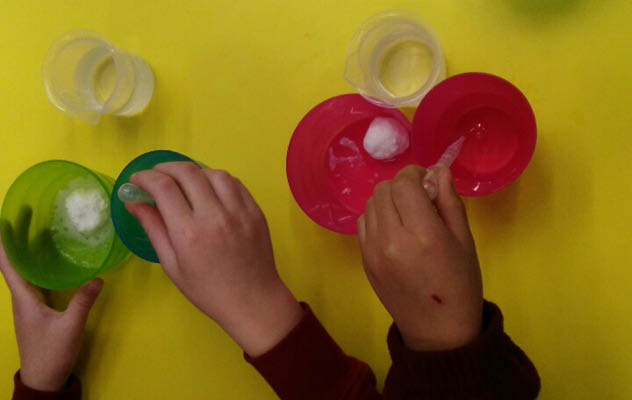
It really is amazing to enter a classroom when the children are absolutely delighted to see you. It’s something I experienced whilst developing lesson plans for special needs schools.
As a science specialist, I used my experience running workshops to devise six super-sensory hands-on chemistry lessons – and then I took them into John Watson School for testing. And, boy, were they tested!
My plan was to run the lessons so that the staff could support the pupils and give me feedback on the suitability of the work. I asked them to be honest and honesty is what I got.
The staff at the school were fantastic at adapting the activities to make them more accessible to pupils. They taught me about tactile defensiveness and how to overcome it using zip lock bags and gloves. They taught me how to appeal to different pupils by adding glitter or using different textures. I have learned so much from them.
"It’s safe to say that the delight of sensory science is not just limited to the special needs classroom."
After key stage 2 tested them to their limit, I took the lessons to key stage 3. Working with a new group brought different challenges. One stellar Teaching Assistant tried different techniques until she found a way to make an activity work with a girl with profound and multiple learning disabilities. It was amazing to watch.
None of the staff were scientifically trained, but through the project they gained confidence in using scientific vocabulary and methods. I saw staff rise to the challenge of unfamiliar lessons; they were stretched but invigorated by their success.
Some of the biggest changes were amongst the pupils. They were genuinely intrigued by what we were doing, especially because they felt in control of so much of it. Staff noticed an increase in engagement times; in one child from his usual five minutes to 25 minutes with his exploration of liquids.
Pupils were eager to play a part; be it as an experimental designer, chief measurer or as the safety officer. Their scientific language improved, they commented on differences and similarities, they learned how to do a fair test – and discovered how adding too much vinegar to bicarb will make a very funny, smelly, fizzing flood.
I’ve since tested the activities with teachers, science presenters and mainstream children all the way down to pre-school. It’s safe to say that the delight of sensory science is not just limited to the special needs classroom.
Find out more
The six practical lessons are funded by the Royal Society of Chemistry and use readily available materials and explore chemistry through practical and hands-on approaches.
About the author
Dr Sarah Bearchell (Sarah’s Adventures in Science) is a freelance science specialist working with children and groups with special needs. She won the Joshua Phillips Award for Innovation in Science Engagement.

